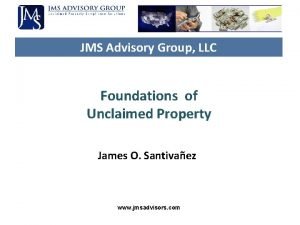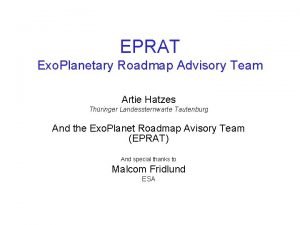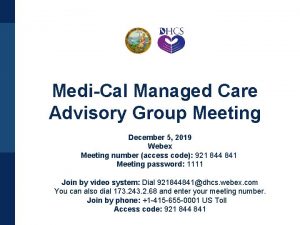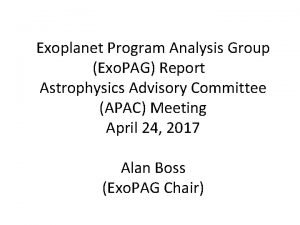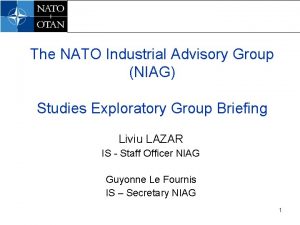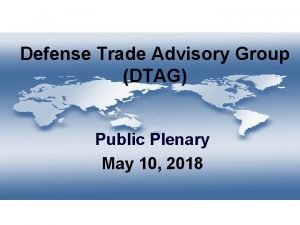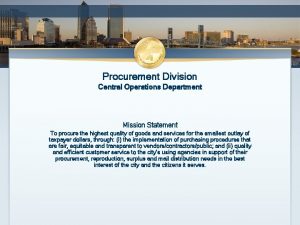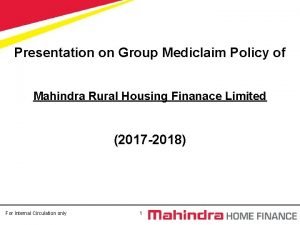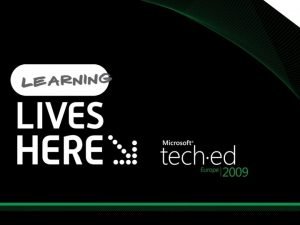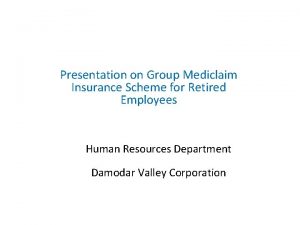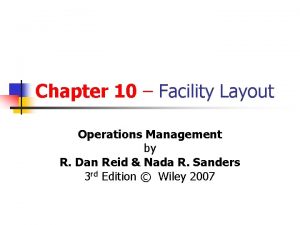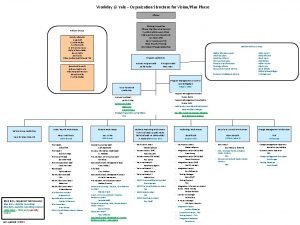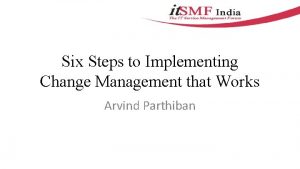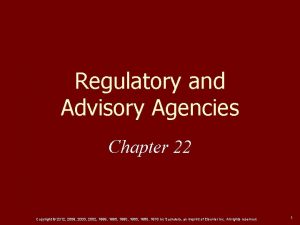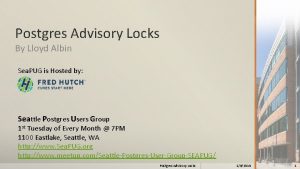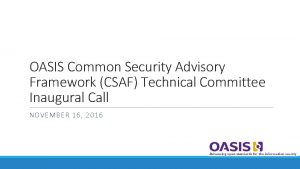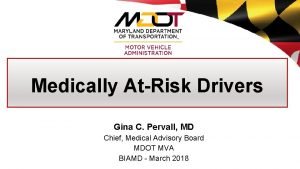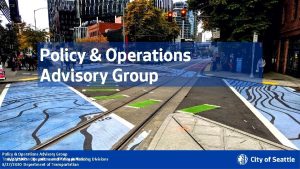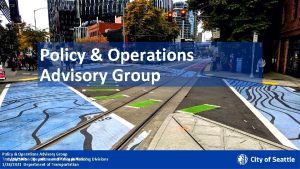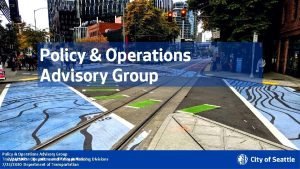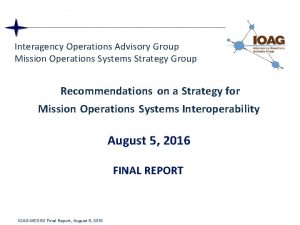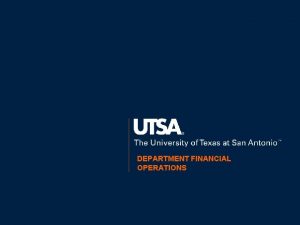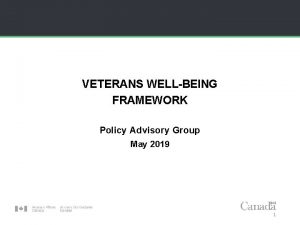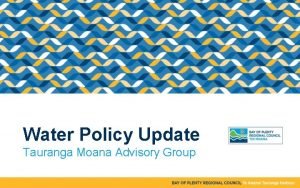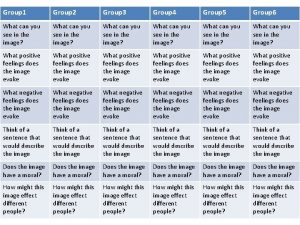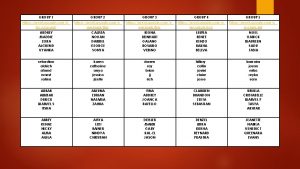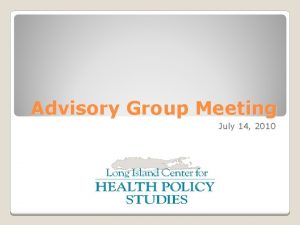Policy Operations Advisory Group 8272020 Operations Department of

































- Slides: 33

Policy & Operations Advisory Group 8/27/2020 Operations Department of. Policy Transportation and & Planning Divisions 8/27/2020 Department of Transportation

Meeting overview 1. Re-introductions 2. Modal Integration • Analysis approach • Examples of modal conflicts • Discussion 3. Signals Operations • Recap of Pedestrian Signal Policy • Discussion 4. Wrap-up and next steps 8/27/2020 Department of Transportation 2

Meeting format § We want to hear from you; we encourage you to chime in and participate; some meetings will have more time for open discussion § During presentations: § We will screenshare slides § Please stay on mute § If you want to chime in or have quick questions answered as we go, please use the chat function (send to "all participants" or "all panelists") or raise hand function § Please say your name before you speak § If you are having technical difficulties, please use the chat or email ellie. smith@seattle. gov 8/27/2020 Department of Transportation 3

Re-Introductions § Name § Organization you represent 8/27/2020 Department of Transportation 4

POAG roster Board, Committee, or Commission Members Bike Advisory Board Alexander Lew & Pierre Brunelle Business Improvement Association Mike Stewart Freight Advisory Board Warren Aakervik & Geri Poor Pedestrian Access Advisory Committee Dorene Cornwell & Steven Feher Pedestrian Advisory Board Emily Mannetti & Anna Zivarts Planning Commission David Goldberg & Grace Kim Transit Advisory Board Erin Tighe & Bryce Kolton Transportation Equity Workgroup Kiana Parker & Yordanos Teferi 8/27/2020 Department of Transportation 5

Modal Integration 8/27/2020 Department of Transportation 6

Tonight’s objectives • Describe our process for identifying common right-of-way constraints/conflicts • Explore common conflicts and how decision are currently made • Discuss key factors in right-of-way allocation 8/27/2020 Department of Transportation 7

Overview of analysis approach 1. Overlay Modal Plan Network Maps (transit, freight, bike) 8/27/2020 Department of Transportation 2. Apply Streets Illustrated dimensional standards to existing street geometry 8 3. Identify curb-to-curb deficiencies where modal plan priorities do not fit

Overview of results • 6, 500 total arterial and collector block segments • 2, 900 s egments in a center, urban village, or neighborhood commercial area • 432 deficient segments 8/27/2020 Department of Transportation 9

Example: transit and freight priority § About 550 are higher bus ridership segments § About 250 are lower ridership segments About 800 block segments are both transit and freight priority (and not a bike priority) 8/27/2020 Department of Transportation 10 § About 80 are an Industrial Access Street type

Existing condition Source: Streetmix 8/27/2020 Department of Transportation 11

Option: install transit-only lanes Source: Streetmix 8/27/2020 Department of Transportation 12

Option: install shared freight & transit lanes Source: Streetmix 8/27/2020 Department of Transportation 13

Discussion • In this case, what factors are most important in determining the use of the right of way (safety is always a top priority) • What information would you want to guide this decision? 8/27/2020 Department of Transportation 14

Example: bicycle priority and the flex zone • About 1, 100 block segments require removal of flex zone/parking to implement a bicycle priority • About 450 are in an Urban Center, Urban Village, or neighborhood commercial area • About 400 are planned as protected bike lanes and 700 are standard bike lanes 8/27/2020 Department of Transportation 15

Existing condition Source: Streetmix 8/27/2020 Department of Transportation 16

Option: install protected bicycle lanes Source: Streetmix 8/27/2020 Department of Transportation 17

Discussion • In this case, what factors are most important in determining the use of the right of way (safety is always a top priority)? • Are there circumstances when flex zone uses should be preserved or when bicycle infrastructure should be clearly prioritized? • What information would you want to guide this decision? 8/27/2020 Department of Transportation 18

Example 3: transit and bicycle priority • About 1, 900 block segments are both a transit and bicycle priority • About 130 block segments are candidates for a transit-only lane and planned for an instreet bikeway • Of those, about 50 segments have a significant right-of-way constraint 8/27/2020 Department of Transportation 19

Existing condition Source: Streetmix 8/27/2020 Department of Transportation 20

Option: install transit-only lanes Source: Streetmix 8/27/2020 Department of Transportation 21

Option: install protected bike lanes Source: Streetmix 8/27/2020 Department of Transportation 22

Option: install transit-only lane & turn lane Source: Streetmix 8/27/2020 Department of Transportation 23

Discussion • In this case, what factors are most important in determining the use of the right of way (safety is always a top priority) • Are there situations where we would prioritize transit or bicyclists within a given corridor? • What information would you want to guide this decision? 8/27/2020 Department of Transportation 24

Signal Operations Policy 8/27/2020 Department of Transportation 25

SDOT values and desired outcomes Safety: meet our commitment to Vision Zero Mobility: provide framework for modal shift 8/27/2020 Department of Transportation 26 Access: increase pedestrian access

Policy components 2. Increase pedestrian crossing time 1. Define maximum cycle length 8/27/2020 Department of Transportation 27 3. Pedestrian actuation (push buttons)

Implementation strategy Policy component Signal retiming 1. Define maximum cycle length 8/27/2020 Department of Transportation Desired outcome Safety Access Mobility Signal modification Signal installation 28 Safety Access Reduced wait time, providing more frequent opportunities to cross the street

Implementation strategy Policy component Desired outcome Signal retiming 2. Increase pedestrian crossing time Safety Signal modification Mobility ADA requests 8/27/2020 Department of Transportation Access 29 Provides enough time for everyone to cross the street

Implementation strategy Policy component Signal optimizations 3. Pedestrian actuation (push buttons) Signal modification ADA requests 8/27/2020 Department of Transportation 30 Desired outcome Safety Access Mobility Prioritizes people walking and provides consistent operations

Policy updates based on feedback Implement policy consistently: • Setting cycle lengths based on street type • Added Urban Residential Villages to total recall policy Max cycle lengths differ • Adding cycle length targets that better align with from NACTO guidelines NACTO Maintain APS even with • APS will not be precluded when we add total recall 8/27/2020 Department of Transportation 31

Next steps 8/27/2020 #1 – June 25 § Kick-off § Introduction to signal operations #2 – July 23 § Draft Comprehensive Traffic Signal Operations Policy: presentation and discussion § Modal Integration: introduction #3 – August 27 § Draft Comprehensive Traffic Signal Operations Policy: continued discussion § Modal Integration: analysis #4 – Sept 24 § Modal Integration: draft policy options #5 – Oct 22 § Modal Integration: draft policy options and operational priority #6 – date TBD § Modal Integration: policy recommendations and discussion § Wrap-up and reflections Department of Transportation 32

Questions? ellie. smith@seattle. gov | (206) 300 -1690 www. seattle. gov/transportation 8/27/2020 Department of Transportation 33
 Unclaimed property dormancy period matrix
Unclaimed property dormancy period matrix Artie hatzes
Artie hatzes Xx2021x
Xx2021x Advisory expert group on national accounts
Advisory expert group on national accounts Exo advisory group
Exo advisory group Nato niag
Nato niag Candace goforth
Candace goforth Operations department mission statement
Operations department mission statement Group mediclaim policy presentation
Group mediclaim policy presentation Admx migrator tool
Admx migrator tool Gpo
Gpo Group policy change management
Group policy change management Group mediclaim policy presentation
Group mediclaim policy presentation Group policy
Group policy Pacific health policy group
Pacific health policy group Group technology layout in operations management
Group technology layout in operations management A hybrid layout combines
A hybrid layout combines Workday yale
Workday yale Wealth advisory solutions
Wealth advisory solutions Ppp advisory
Ppp advisory Change advisory board
Change advisory board Chapter 22 regulatory and advisory agencies
Chapter 22 regulatory and advisory agencies Nasa astrophysics advisory committee
Nasa astrophysics advisory committee Pg_advisory_xact_lock
Pg_advisory_xact_lock Rb advisory
Rb advisory Interoperability standards advisory
Interoperability standards advisory Common security advisory framework
Common security advisory framework [email protected]
[email protected] Kapgrow corporate advisory services pvt. ltd
Kapgrow corporate advisory services pvt. ltd Kairos advisory
Kairos advisory Hampshire services for young children
Hampshire services for young children What are advisory shares
What are advisory shares What is an advisory circular in aviation
What is an advisory circular in aviation Ernstyoung voice
Ernstyoung voice
